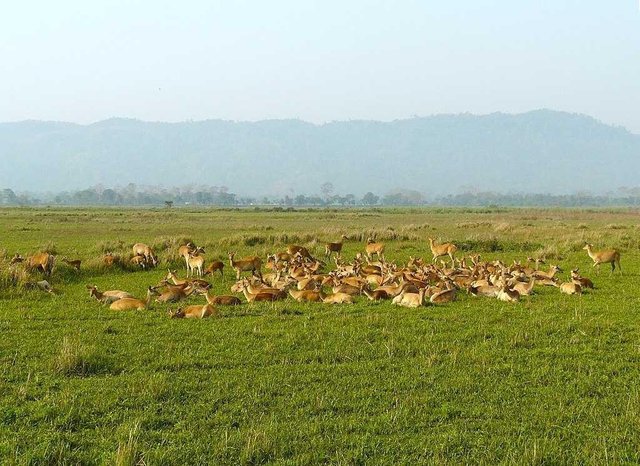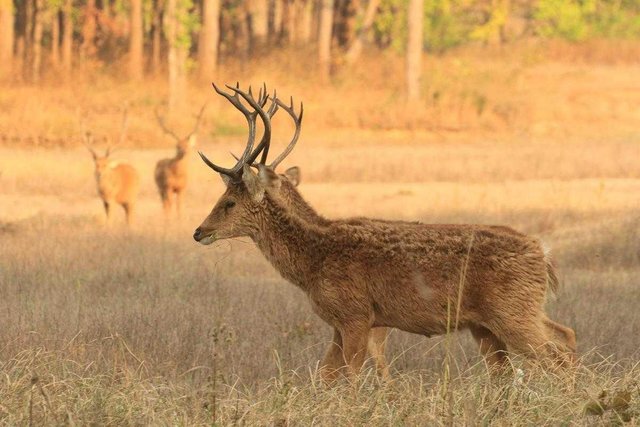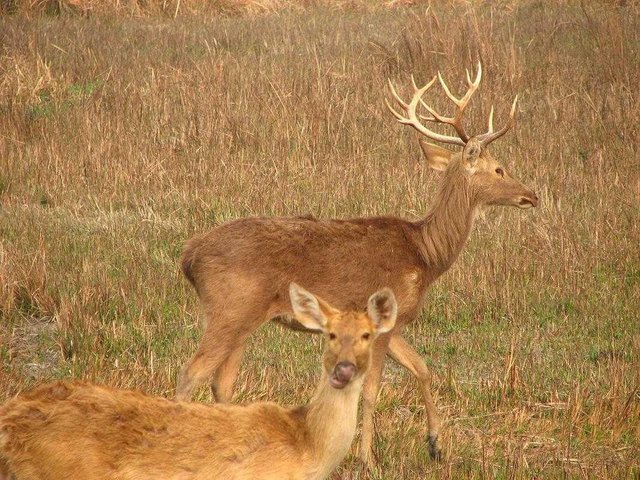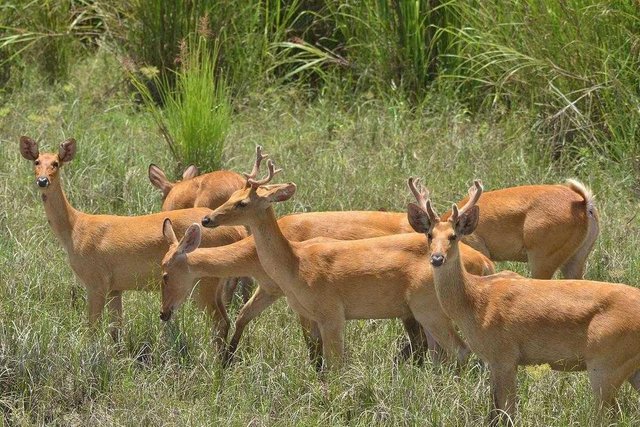Barassing is a Handsome Deer Who Disappears. [FLORA AND FAUNA]
Barassing is an amazing deer, found only on the Hindustan Peninsula. He was on the verge of collapse and now not far from there. She has some funny oddities in her behavior, and she looks very good, despite her second name - the swamp deer. I will continue my story of the Indian animal world with stories about him.
Barasingha Oleneva belongs to a family composed of deer, deer, deer, fallow deer, antelope, Pudu, and Axis Mazama. The name itself barasingha shows "12 horns", but horns, of course, two, but their process in an average of only 12. The noble horn - the length can reach one meter. The average dimension of deer (for families): high in wilts about 130 cm, weight from 150 to 170 kg (some representation reaches 200 kg). Brown hard wool change shade all year: dark in winter, enlightening in summer. There is also a yellowish, golden, brown color. The very thick coat is not visible, but it has a nice feature - waterproof for water. Therefore, in the heat of barassing can easily escape from the heat, into the water into the stomach.
And the deer love water very much - it's always there in the humid terrain, in the meadow, sometimes in the swamp. Large nails with large treads help it move quickly and not jam. Barasings prefer to eat watery grass, go to the meadows in the morning and evening. They will not refuse from bark, fruit, leaves. Especially on hot days the deer can rest during the day in the shade, but all night long there. They live in a herd, which helps them save themselves from the tiger: there are always observers who will signal danger. The number of animals in the herd can vary from 10 in the summer to 30-40 in winter and during the period of nomadic migration.
In the breeding season, men insult very pleasantly: they decorate their horns with grass, attract females. But the battles they did not like - the horns in this period were still soft, so rivals could only be hung with green and howling loudly. Roar, however, is quite melodic and almost soft compared to other deer. In females, after 250 days of pregnancy, there are 1-2 visible babies, who, after growing a little, remain together with other deer, forming something like school. After a year, adult deer are poured into a common herd.
Rudyard Kipling calls barassing in "The Second Book of the Jungle" as a kind, a sympathetic being who, in response to one's help, warns him of danger. The states of Madhya Pradesh and Uttar Pradesh chose deer as their symbolic animals.

Once upon a time the barassing was populated all over central part of India. But then the number began to decline sharply because of poachers, hunters and the development of agricultural land. People kill deer for their meat, horns are sold as souvenirs, and are used in traditional medicine. Individual nationality sews clothes from leather. As a result, in Pakistan deer barassing is totally dead, in Nepal there are two small groups, in India there are a number of isolated populations. Now, of course, there are many activities to preserve species, barassings are protected by law, hunting for them is prohibited entirely. But because of environmental damage, forest pollution and meadows, shallow rivers, these barassings measures do not save. Currently, in the wild, these deer are almost impossible to meet, the animals remain only in Kanha National Park, Kaziranga, about 1500 people live in the Indo-Gangetic plains. The total amount is difficult to estimate, but, most likely, no more than 5-6 thousand deer.



So.....nice dear